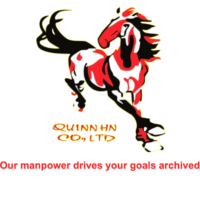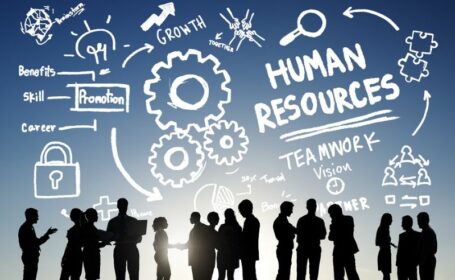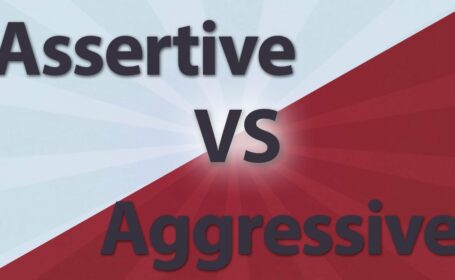

Strategic Workforce Management: The Vital Role of Fixed and Current Assets in Labor Export
- trienkhaiweb
- 7 May, 2024
- 0 Comments
In the dynamic landscape of labor export, where companies like Quinn Vietnam Manpower specialize in connecting skilled workers with global opportunities, understanding the financial underpinnings of the business is crucial. Two key concepts that every workforce management professional should grasp are fixed assets and current assets. While seemingly straightforward, these terms hold significant implications for the success and sustainability of labor export ventures.
Understanding Fixed Assets: The Backbone of Your Manpower Operations
Fixed assets, often referred to as non-current assets, are the long-term investments that empower your labor export company to deliver its services effectively. These are the assets you don’t intend to sell quickly but rather leverage over an extended period to drive your business forward.
-
Office Spaces and Training Facilities: The physical spaces where you recruit, assess, and train your skilled workforce are prime examples of fixed assets. These spaces are essential for showcasing your professionalism and ensuring your workers are well-prepared for their international assignments.
-
Technology and Software: In today’s digital age, the technology infrastructure you use to manage candidate profiles, streamline communication, and track deployments is a critical fixed asset. This includes your applicant tracking systems, communication platforms, and data analytics tools.
-
Transportation Vehicles: If your company provides transportation services for workers, the vehicles in your fleet are considered fixed assets. They play a crucial role in ensuring your manpower arrives at their destinations safely and on time.

Why Fixed Assets Matter in the Labor Export Industry
Fixed assets are not just line items on a balance sheet; they represent your commitment to quality service. For instance, Quinn Vietnam Manpower‘s investment in modern training facilities signals to potential clients and workers that they prioritize skill development and professional growth. Moreover, fixed assets can significantly impact your company’s profitability. A well-maintained fleet of vehicles, for example, can reduce maintenance costs and ensure efficient operations, ultimately boosting your bottom line.
Navigating Current Assets: The Fuel for Your Manpower Operations
While fixed assets provide the foundation for your labor export business, current assets are the resources you actively manage to keep your operations running smoothly. These are the assets you expect to convert into cash or consume within a year to generate revenue and meet your short-term obligations.
-
Cash and Cash Equivalents: This includes the money you have readily available in your bank accounts, as well as short-term investments that can be easily liquidated. Cash is the lifeblood of your business, covering payroll, marketing expenses, and other operational costs.
-
Accounts Receivable: When you successfully place workers with international clients, the payments you are owed for your services fall under accounts receivable. Managing this asset efficiently is vital for maintaining healthy cash flow.
-
Prepaid Expenses: These are costs you pay in advance, such as insurance premiums or rent for your office space. While not immediately converted into cash, they are essential for ensuring the smooth operation of your business.

The Synergy of Fixed and Current Assets in Workforce Management
The interplay between fixed and current assets is a delicate balancing act. Your fixed assets provide the capabilities, while your current assets provide the resources to execute your manpower strategies. For a company like Quinn Vietnam Manpower, a robust technological infrastructure (fixed asset) coupled with sufficient cash reserves (current asset) allows them to quickly respond to client demands and deploy skilled workers efficiently.
Optimizing Your Workforce Assets for Success
To thrive in the competitive labor export market, companies must not only acquire the right assets but also manage them strategically. This includes:
-
Regular Asset Evaluation: Assess the condition and relevance of your fixed assets. Are your training facilities still up-to-date with industry standards? Is your technology infrastructure supporting your growth?
-
Efficient Cash Flow Management: Monitor your accounts receivable diligently to ensure timely payments from clients. Maintain a healthy cash balance to cover unexpected expenses and seize new opportunities.
-
Data-Driven Decision Making: Utilize the data generated by your technology platforms to gain insights into your workforce trends, client preferences, and operational efficiency.
In conclusion, fixed and current assets are the twin pillars upon which successful labor export companies like Quinn Vietnam Manpower are built. By understanding their distinct roles and managing them effectively, you can optimize your workforce strategies, enhance your profitability, and solidify your position as a leader in the global manpower industry.
Remember, in the world of workforce management, your assets are more than just numbers on a balance sheet; they are the tools that empower you to connect talent with opportunity and drive economic growth on a global scale.
Related articles
11 Universal Truths That Fuel Successful Research in Manpower Management
In today’s rapidly evolving business landscape, staying ahead of the curve requires a commitment to ongoing research and analysis. This is especially true in the field of manpower management, where understanding trends and adapting to change is crucial for success. Whether you’re a seasoned HR professional or a business leader seeking to optimize your workforce,…
15 Effective Manpower Recruitment Strategies: A Quinn Vietnam Manpower Guide
In today’s competitive business landscape, securing top talent is crucial for success. Effective manpower recruitment is the foundation upon which organizations build high-performing teams and achieve their goals. This comprehensive guide, brought to you by Quinn Vietnam Manpower, outlines 15 proven strategies to optimize your recruitment process and attract the best talent in 2025. Develop…
17 Essential Management Skills for Success
The business landscape is constantly evolving, and 2025 promises to bring new challenges and opportunities for managers across all industries. While there’s no magic formula for becoming a great leader, cultivating a strong set of management skills is crucial for navigating the complexities of the modern workplace. This article, brought to you by Quinn Vietnam…
20 Qualities of a True Leader in the Manpower Industry
Leadership in the manpower industry requires a unique blend of skills and attributes. At Quinn Vietnam Manpower, we recognize the importance of strong leadership in driving success for our clients and partners. As we move into 2025, the demands on leaders are evolving, requiring adaptability, vision, and a deep understanding of the changing dynamics of…
Aligning Purpose and Objectives for Manpower Success
In the dynamic landscape of manpower management in 2025, understanding the difference between purpose and objectives is crucial for organizational success. Quinn Vietnam Manpower recognizes that a clear articulation of purpose and well-defined objectives are essential for driving performance, fostering employee engagement, and achieving strategic goals. This article delves into the critical distinction between purpose…
Assertive vs. Aggressive Leadership: Finding the Balance
In today’s dynamic business environment, effective leadership is crucial for success. Leaders need to be assertive to drive results, inspire their teams, and navigate challenges. However, there’s a fine line between assertiveness and aggression, and crossing it can create a toxic work environment, hinder productivity, and damage morale. This article, brought to you by Quinn…







